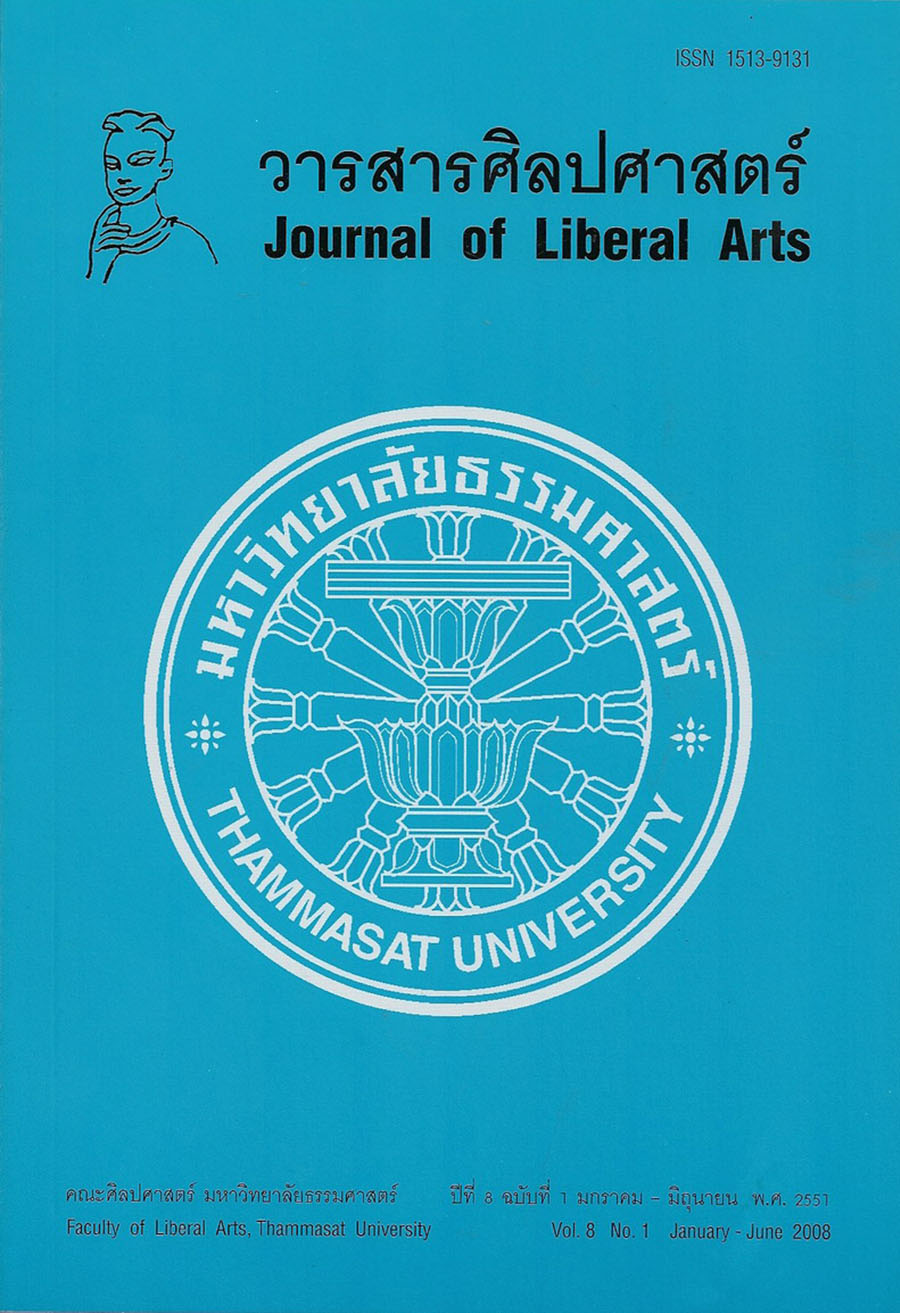ความสุขของกะทิ
Main Article Content
บทคัดย่อ
การศึกษาเรื่อง “วิจารณ์วรรณกรรมเยาวชนแปลเรื่อง “The Happiness of Kati” ของ Prudence Borthwick” มีวัตถุประสงค์เพื่อศึกษา และวิเคราะห์ต้นฉบับและงานแปล เพื่อเปรียบเทียบงานแปลกับต้นฉบับ เพื่อประเมินงานแปล และเพื่อประเมินอนาคตของงานแปล
ในด้านการวิเคราะห์ต้นฉบับนั้น ผู้วิจัยพบว่าผู้เขียนมีจุดมุ่งหมายเพื่อให้ความบันเทิงตลอดจนสอดแทรกแง่คิดเกี่ยวกับการมองโลกในแง่ดี นอกจากนี้ผู้เขียนใช้ภาษาง่าย ๆ ดังนั้น วรรณกรรมเล่มนี้จึงเหมาะกับผู้อ่านทุกวัย
ในด้านการวิเคราะห์งานแปลนั้น ผู้วิจัยพบว่า ผู้แปลชื่นชมวัฒนธรรมไทยที่ปรากฏในเรื่อง “ความสุขของกะทิ” ด้วยเหตุนี้จึงพยายามถ่ายทอดให้ผู้อ่านต่างวัฒนธรรมเข้าใจ นอกจากนี้ ผู้แปลใช้กลวิธีการแปลสามกลวิธีได้แก่ การแปลแบบตรงตัว การแปลเชิงอรรถศาสตร์ และการแปลแบบเอาความ
ในด้านการเปรียบเทียบงานแปลกับต้นฉบับนั้น สามารถจำแนกออกเป็น 4 ระดับ ได้แก่
(1) ระดับคำ ผู้แปลใช้กลวิธีการแปลทั้งสิ้น 7 วิธี ได้แก่ การใช้คำยืมหรือการใช้คำยืมกับคำอธิบาย การถอดความ การใช้คำที่มีความหมายเฉพาะเจาะจงการใช้คำที่มีความหมายกว้างกว่าภาษาต้นฉบับ การละ การใช้คำจากกลุ่ม และการแทนที่ทางวัฒนธรรม
(2) การแปลสำนวน ผู้แปลใช้กลวิธีการ ถอดความ
(3) ระดับวากยสัมพันธ์ ผู้แปลใช้กลวิธีทั้งสิ้น 5 วิธี ได้แก่ การเพิ่มประธาน การเพิ่มกรรม การใช้ประโยคกรรมวาจก การแปลประโยคเป็นวลี และการทำให้เป็นแก่นความ
(4) ระดับสัมพันธสาร ผู้แปลใช้กลวิธีการแปลทั้งสิ้น 2 วิธี ได้แก่ การเพิ่มข้อความ และการละข้อความ
ในด้านการประเมินงานแปลนั้น ผู้วิจัยพบว่า ผู้แปลแปลวรรณกรรมเยาวชนเรื่องนี้ได้อย่างถูกต้อง เป็นธรรมชาติ และทำให้ผู้อ่านมีอารมณ์ร่วมเช่นเดียวกับที่อ่านภาษาต้นฉบับ
ในด้านอนาคตของงานแปลนั้น ผู้วิจัยพบว่า งานแปลนี้มีส่วนช่วยให้คนต่างวัฒนธรรมรู้จัด และเข้าใจวัฒนธรรมไทยผ่านทางการอ่านงานแปลชิ้นนี้หรือจากการนำงานแปลชิ้นนี้มาแปลเป็นภาษาอื่น ๆ
The Criticism of the Children’s literature book “The Happiness of Kati”, translated by Prudence Borthwick, is aimed to study and analyze the source text as well as the target text; to compare the target text with the source text; evaluate the translation; and to assess the translation’s future.
For the source text analysis, we find that the author writes this book to entertain the readers by inserting the optimistic points of view into the story. The language used in this book is simple, so it is suitable for every person from all generations.
For the target text analysis, we find that the translator appreciates Thai cultures, so she tries to disseminate them for people in other cultures. As for the techniques, she utilizes Literal Translation, Semantic Translation and Free Translation.
For the comparison of the translation with the original, it can be divided into four levels:
(1) At word level, the translator uses seven strategies: translation by using loan words or loan words with explanation, translation by paraphrase, translation by using a more specific word, translation by using more general word, translation by using superordinates and translation by cultural substitution.
(2) At idiomatic level, the translator uses the paraphrase strategy.
(3) At syntactic level, the translator uses subject and object addition, passive voice structures, sentence-to-phrase translation and topicalization.
(4) At discourse level, the translator uses text addition and omission.
For the evaluation of the translation, we find the translation is accurate, natural and effective.
For the translation’s future, we find that “The Happiness of Kati” can introduce Thai words and culture to the foreign readers and it helps them understand the Thai culture after reading this literature in English or in other languages.


